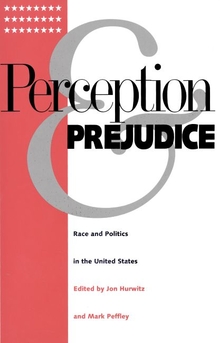Maps and History
WARNING
You are viewing an older version of the Yalebooks website. Please visit out new website with more updated information and a better user experience: https://www.yalebooks.com
Constructing Images of the Past
Jeremy Black
Out of Print
Jeremy Black begins with a consideration of the "pre-history" of the historical atlas: individual maps depicting the Holy Land at the time of Christ and maps of the classical world. He then examines the first known historical atlas, the Parergon of Abraham Ortel, which was published in Antwerp in 1579 and was followed by other works that mapped the world of the Bible and the classics. In the eighteenth century, there was a growing interest in mapping the post-Classical world, and works appeared that included maps of medieval Europe. In the nineteenth century, historical maps came increasingly to embody a clear political emphasis, mapping blocs of territory separated by clear linear frontiers and reflecting an approach to the past focused on undivided sovereignty and the development of the nation-state.
In the twentieth century, historical atlases have both contributed to and responded to other ideologies, portraying peoples, languages, and cultural differences in an immediate and often striking visual form. Since 1945 the range of atlases has broadened to include maps devoted to the global environment, health, population trends, and other sociological, cultural, and economic changes. And the "liberation" of the Third World and the ending of the Cold War have stimulated a full scale re-mapping of the globe and the way it is perceived.
A selection of the History Book Club
"A marvel of erudition."—Ian Thompson, Sunday Times
"[This] book is more than an excellent guide to the subject: it also provides a vast quarry of information on how visions of the world and the past have been warped by political and cultural prejudices. . . . A veritable encyclopedia of the subject, in which every contributor to the tradition gets a mention and every technical advance is recorded."—Felipe Fernandez-Armesto, Literary Review
"This is one of those all too rare works which take an obvious but generally neglected source and show how it can be used to illuminate a central historical question: how societies 'imagined' themselves and their past."—John Adamson, Sunday Telegraph
"Black's book, with its arch, distant narrative, offers a heavy dose of objectivism. . . . Now that there are so many fashionable niches of academic study, Black suggests that historians should not only read, but also look and learn: 'cartography represents power.'"—Tobias Jones, Observer
"A magisterial work. Profusely illustrated, thoroughly footnoted, and lavishly and delightfully produced, Black's work is a provocative piece of scholarship."—Choice
"This is a practical, direct, informed but not dogmatic survey-study, the content of which is sufficiently fascinating to compensate for the author's leaden prose."—Eileen Battersby, Irish Times
"This book should be required reading for all history teachers who tend to use atlases in rather uncritical ways."—Edward Watson, Teaching History
"Black's book shows just what a historian should reveal: far from being neutral records of the extension of measurement and rationality, maps have always been profoundly purposeful things. . . . Remarkably, this is the first survey in English of how people in Europe and America depicted the space in which they lived from Abraham Ortelius's historical atlas of 1570 to the latest moment."—Jonathan Clark, Spectator
"[This book] deals splendidly with the most vexing question of historical cartography, and explains the deeply positivistic tendencies of much historical mapping, [and] deserves a place with the best works on environment, geohistory, and mentalités. The range of this book is at times breathtaking. . . . A beautifully produced book."—Don MacRaild, Archives
"An encyclopedic tour de force."—Lesley B. Cormack, Journal of Interdisciplinary History
"Black successfully introduces historians to a body of materials and perspectives that may lead them to take geographical visualization and the geopolitical structuring of the world that such visualization engendered much more seriously than they have previously. This is no small achievement for a single book."—John A. Agnew, International History Review
"Few historians write on so many varied subjects as Jeremy Black. His work spans centuries; he moves with ease from diplomatic history to social and cultural history; he is a biographer, he has written on cartography and on the Grand Tour; and he is recognized as one of our leading military historians. In times when so many academic historians spin out a narrow specialism over an entire career and disdain to engage with a wider readership than a coterie of fellow specialists, he is not afraid to confront great issues and grand themes, confident that the historian's work and preoccupations can and should educate and influence a wider informed public and that the study of the past has a relevance for those who make decisions in the present."—Bill Purdue, Archives
"Maps and History is a scholarly and detailed study of the development, role and nature of historical atlases from their beginnings to the present day."—James F. Doig, Geomatica
"[Black] has delved into the soul of the historical atlas and laid it bare for us to understand. . . . I can’t imagine Maps and History not being the definitive work on historical atlases for a long time to come. I know I will never look at another historical atlas the same way again. Maps and History belongs in all academic libraries and larger public libraries."—Riley Moffat, WAML (Western Association of Map Libraries) Information Bulletin
"I lively and well-illustrated survey of how maps fit into a number of critical historiographic debates concerning, for example, nationalism and environmental determinism in the nineteenth century. For this we must be grateful to the author for his diligence in searching out important and revealing maps that have heretofore not received due emphasis in various historical debates."—John Agnew, Journal of Modern History
"Essential reading for anyone who wishes to bet beyond the often technical considerations of much of the history of cartography and to develop a better understanding of the connections between the map and context in which it is produced and consumed."—Michael Curry, ISIS
"[A] wealth of information on how to look critically on maps and how to avoid being taken in by them, and hence, how to instruct students to do the same."—Steve Jolivette, Journal of World History
"Black . . . has written an important book, a pioneering work that should be rewarding for all with any interest in the history of cartography or the teaching of history."—Dennis Reinhartz, Geographical Journal
Publication Date: June 25, 1997
90 b/w + 30 color illus.














